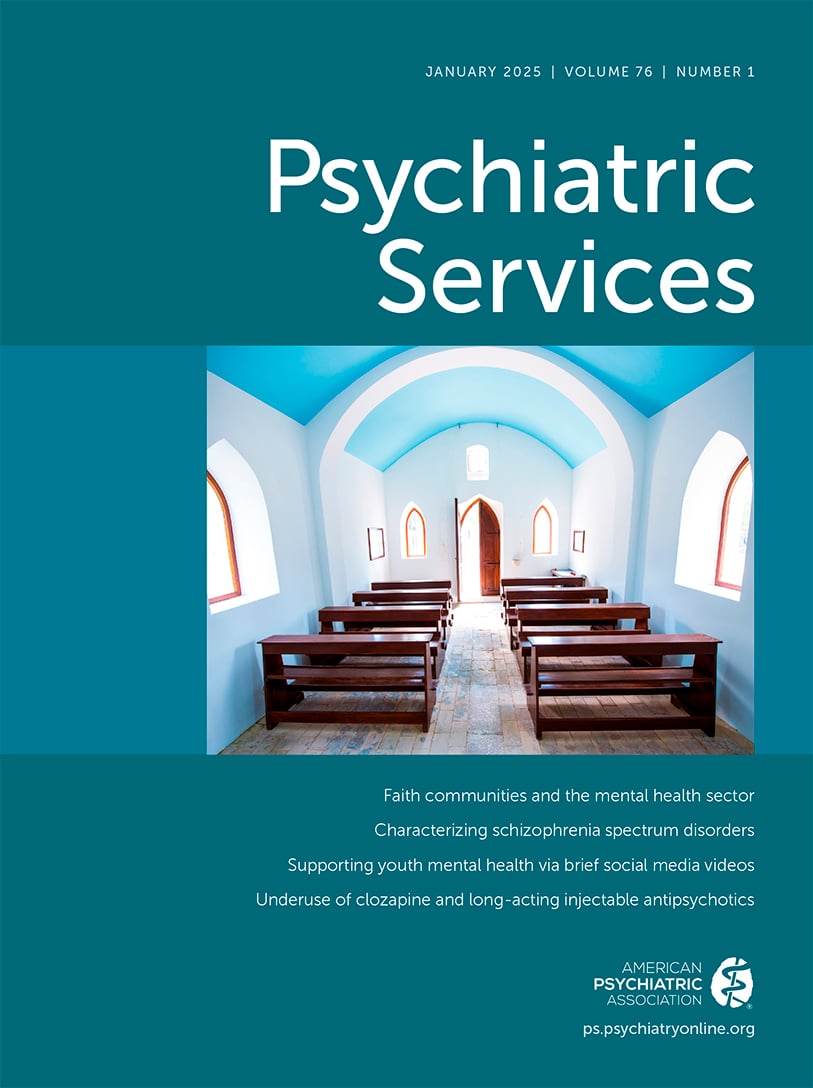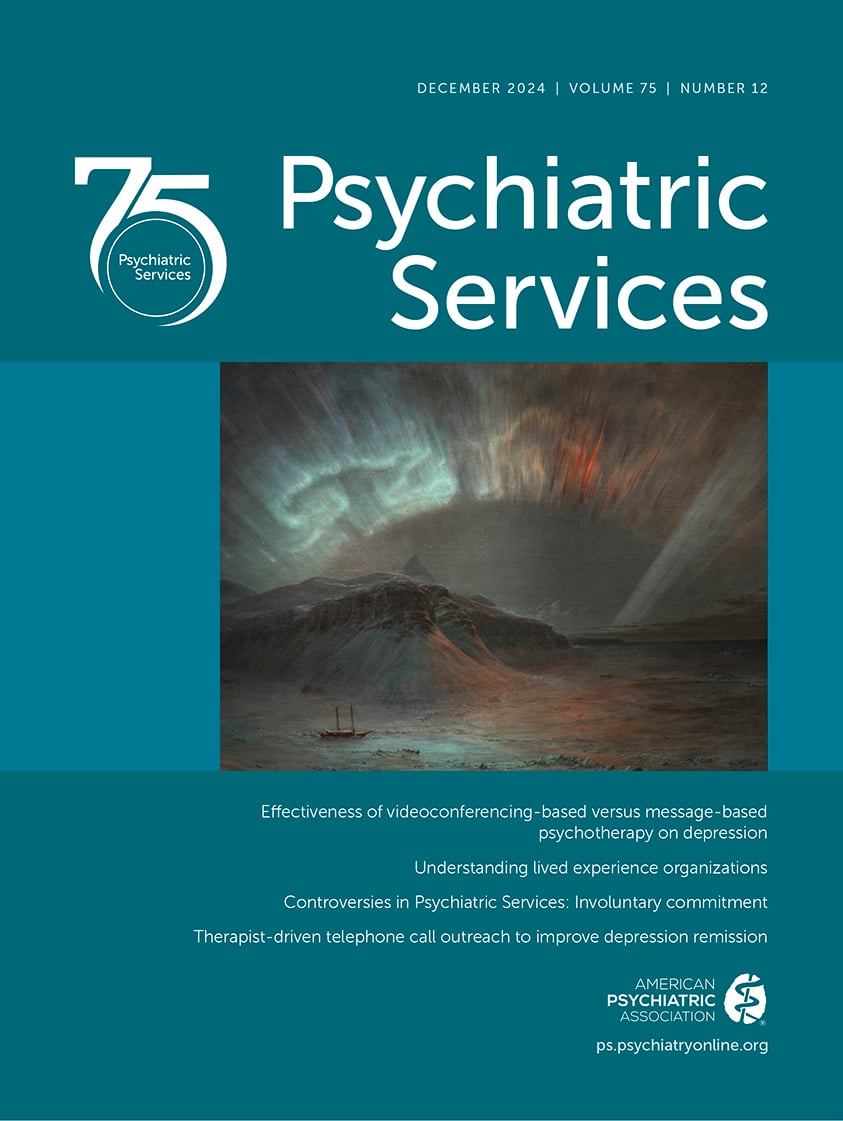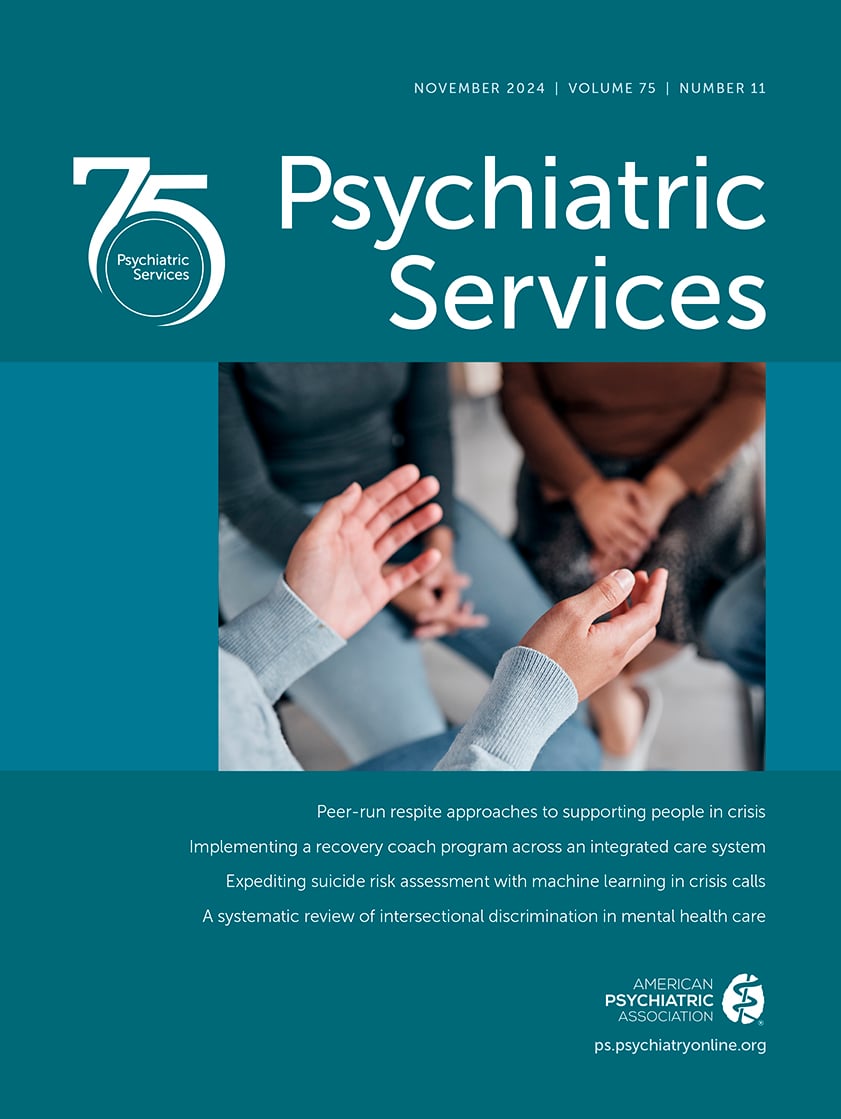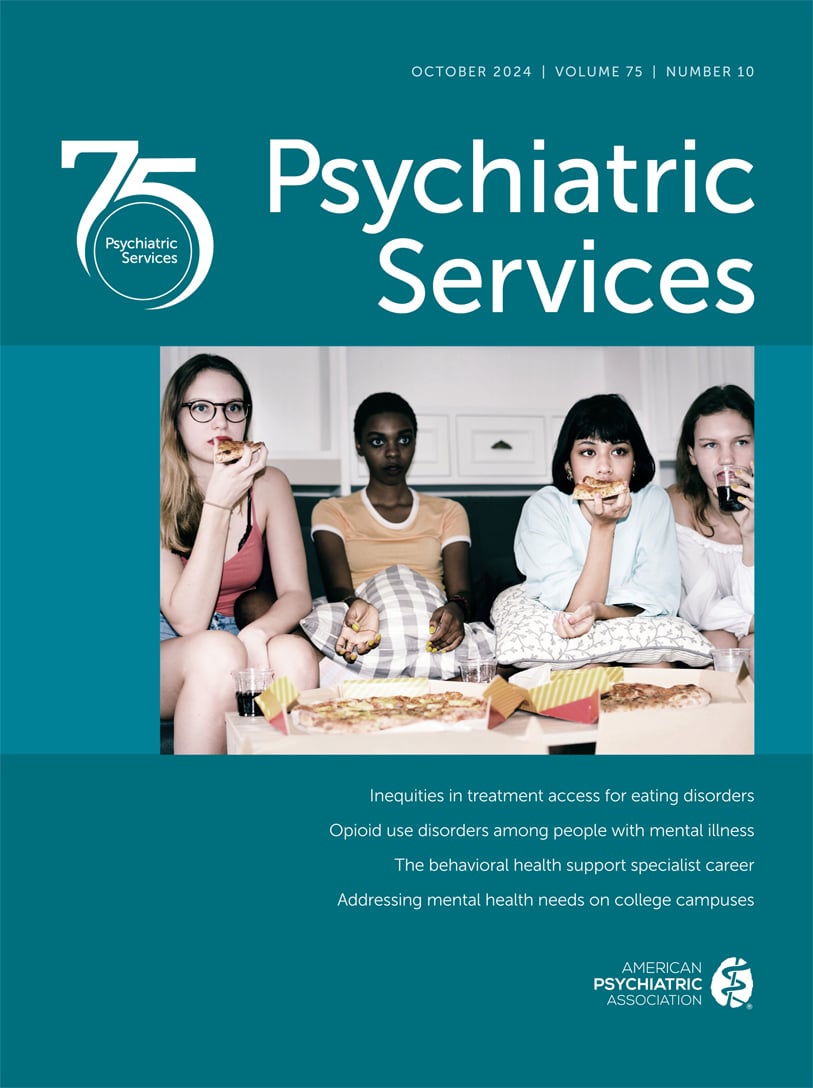Psychiatric Services
- Volume 36
- Number 9
- September 1985
Article
Publication date: 01 September 1985
Pages925–928Dr. Eth's Introduction: From the selection ofa research priority to the choice of a treatment modality, mental health professionals are continuously making value judgments. However scientific clinicians have become, their decisions inevitably reflect a ...
https://doi.org/10.1176/ps.36.9.925Publication date: 01 September 1985
Pages939–942Dr. Sbarfstein's Introduction: This month's column discusses the most important change in Medicare coverage for mentally disorders since the inception of Medicare almost 20 years ago. It provides a perspective on the benefits as well as some of the ...
https://doi.org/10.1176/ps.36.9.939Publication date: 01 September 1985
Pages951–957The publication of a new nosology of sleep and arousal disorders in 1979 established the need for differential diagnosis of sleep disorders based on polysomnographic evaluations as well as medical history and physical examination. This review of recent ...
https://doi.org/10.1176/ps.36.9.951Publication date: 01 September 1985
Pages958–961The nation's courts are increasingly defining standards for the practice of psychiatry, but they have not given substantial attention to whether a psychiatrist can befound liable for failure to perform or obtain a physical examination of an outpatient. ...
https://doi.org/10.1176/ps.36.9.958Publication date: 01 September 1985
Pages962–965In a study to determine whether certain factors could predict whether veterans seek psychiatric care at a Veterans Administration psychiatric hospital or at other public hospitals, data were collected on 644 visits by veterans to one VA psychiatric ...
https://doi.org/10.1176/ps.36.9.962Publication date: 01 September 1985
Pages968–972In the view of some patient advocates, APA's model law excessively increases psychiatrists' decision-making power in commitment proceedings and heightens the chances of unnecessary commitments by expanding grounds for commitment to include a substantial-...
https://doi.org/10.1176/ps.36.9.968Publication date: 01 September 1985
Pages973–975As a mental health advocate and the parent of a chronic mentally ill son, the author argues for adoption of the provisions in APA's model law on civil commitment, He believes that a shift in mental health law from absolute protection of civil liberty to ...
https://doi.org/10.1176/ps.36.9.973Publication date: 01 September 1985
Pages975–977In 1979 the State of Washington revised its civil commitment law to make it easier to hospitalize patients in need of care but not imminently dangerous to themselves or others. To assess the impact of the law, the author studied commitment patterns in ...
https://doi.org/10.1176/ps.36.9.975Publication date: 01 September 1985
Pages978–980The author commends the American Psychiatric Association's model law on civil commitment as a practical document that is symbolic of psychiatry's concern about the quality of public mental health services. However, he believes that even the most ...
https://doi.org/10.1176/ps.36.9.978Publication date: 01 September 1985
Pages981–983The author argues that the APA model law is seriously flawed because it lacks sufficient mechanisms for questioning the judgment ment of psycbiatrists throughout the commitment process and for ensuring the best disposition of patients. By failing to ...
https://doi.org/10.1176/ps.36.9.981Publication date: 01 September 1985
Pages984–989APA's model commitment law was drafted in response to the dominant libertarian approach to civil commitment, which holds that the liberty and privacy interests of a mentally ill individual must be given precedence over all other interests. The author, who ...
https://doi.org/10.1176/ps.36.9.984Publication date: 01 September 1985
Pages993–995Psychosocial rehabilitation programs are known for their pragmatism and flexibility. They have tackled the problem of recidivism by borrowing techniques from successful programs (regardless of theoretical orientation), relying on trial and error or ...
https://doi.org/10.1176/ps.36.9.993Past Issues
View Issues Archive
Vol. 76 | No. 1

Vol. 75 | No. 12

Vol. 75 | No. 11
